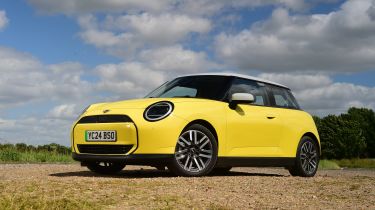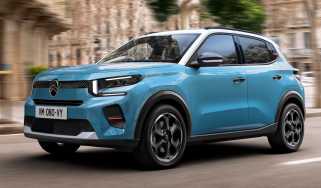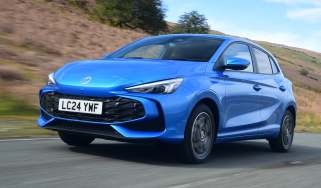MINI Cooper review - MPG, running costs & CO2 emissions
“The MINI Cooper should be economical to run, and the Cooper Electric has a longer range than before”
The MINI Cooper comes with a choice of petrol and electric power, with the latter able to provide cheaper running costs and zero tailpipe emissions. Thanks to the fact that it’s now based on a dedicated EV platform, the MINI Cooper Electric has a much more usable range compared to that of the outgoing MINI Electric. Strangely, the John Cooper Works Electric has a longer on-paper range compared to the SE, despite using the same battery and having an extra dose of power.
| Model | Battery size | Range |
| MINI Cooper E | 41kWh | 185 miles |
| MINI Cooper SE | 54kWh | 247 miles |
| MINI JCW Electric | 54kWh | 250 miles |
The petrol MINI Cooper still shouldn’t cost the earth to run, and it’s cheaper to buy in the first place. You can expect maximum economy figures ranging from between the mid to late 40mpgs whether you go for the 1.5 or 2.0-litre engine.
| Model | Fuel economy | CO2 emissions |
| MINI Cooper C 1.5-litre petrol | 47.9mpg | 133g/km |
| MINI Cooper S 2.0-litre petrol | 45.6mpg | 140g/km |
| MINI JCW 2.0-litre petrol | 43.5mpg | 147g/km |
How efficient is the MINI Cooper in the real world?
When we drove the MINI Cooper SE, we found the real-world range to be more likely around the 200-mile mark, which is an unimpressive, but respectable distance when compared to its official 250-mile on-paper figure.
During our testing of the MINI Cooper E, we were able to match MINI's claimed 4.5 miles/kWh figures, which translates to a range of around 165 miles. When driving at lower speeds in town and on suburban and A-roads, we were even able to get closer to 5 miles/kWh, showing just how efficient the Cooper E can be when driven carefully.
How much will the MINI Cooper cost in tax?
The petrol MINI Cooper will cost the standard rate in VED (road tax), which equates to £190 per year at the time of writing. Even a fully kitted-out petrol model shouldn’t cost over £40,000, so it shouldn’t incur the five-year premium car surcharge for models that cost more than that.
All electric models are exempt from VED (road tax) until April 2025 – after that date, the rate of VED will go up to £10 a year for electric cars.
The MINI Electric will be the best version to go for as a company car, because its zero-emissions status puts it in the lowest Benefit-in-Kind (BiK) tax band.
What will the MINI Cooper cost to insure?
The latest MINI Cooper spans insurance groups 20 to 26 out of 50 in C, S, E and SE trims, so it’s relatively expensive to insure compared to other superminis. We were unable to find insurance ratings for the JCW and JCW Electric models, but we’d expect these to be higher still.

















